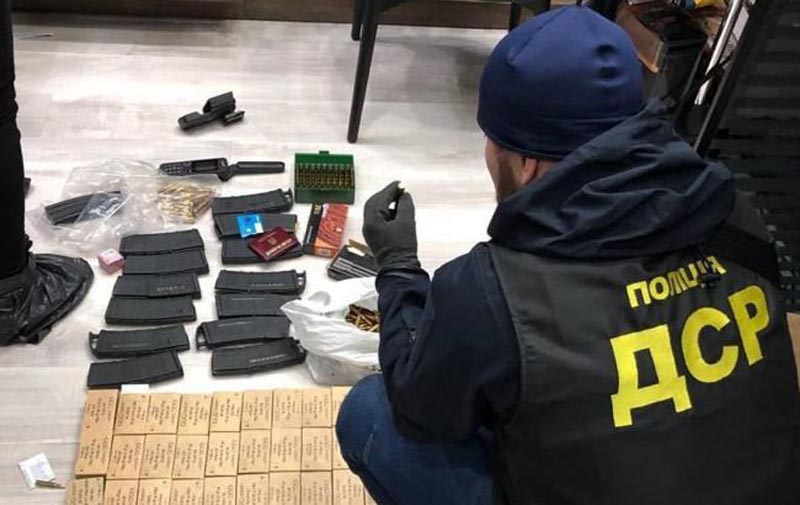«Двадцатовские». Как в Украине вычислили масштабный наркосиндикат родом из 90-х


В начале года правоохранители задержали всех членов известного наркосиндиката «Двадцатовские», который осуществлял свою деятельность в Кривом Роге еще с девяностых.
О том, как строилась работа синдиката, какова была иерархия и как удалось задержать всех, включая организаторов, в интервью РБК-Украина рассказал начальник Департамента стратегических расследований Андрей Рубель.
Во время подготовки материала использовались комментарии Андрея Рубеля, а также оперативная информация ДСР и Национальной полиции Украины.
Иерархия синдиката
«Двадцатовские» – криворожский синдикат наркоторговцев, который действовал в городе с девяностых годов. Его назвали в честь одноименного квартала в Кривом Роге. «Двадцатовские» начинали как банда рэкетиров. Когда они обрели большое влияние, то стали «продавать» свою лицензию на рэкет другим, не таким обширным бандам. Те, в свою очередь, отдавали часть «дани» от рэкета самим «двадцатовским» за лицензию и силовую помощь.
Параллельно с этим банда стала заниматься производством и распространением наркотиков. Вскоре банда превратилась в настоящий синдикат с собственной иерархией.


«Они достаточно системно подошли к построению работы, чтобы их не могли разоблачить. Кривой рог поделен на районы, эти районы поделены на кварталы. В каждом квартале, в каждом районе у них были свои представители, сбывавшие наркотики. Был даже «силовой блок» – приезжавшие люди, если возникали «проблемы». Процесс «воспитания» своих они между собой называли «рыбалкой», – отмечает Рубель.
В целом, работа выглядела следующим образом – сначала наркосодержащие препараты банда получала незаконным путем, в том числе и заграницей. К примеру, в Сербии у «двадцатовских» был свой человек, которого они называли «Аптекарь». К «Аптекарю» ездили курьеры и забирали у него таблетки, в основном, псевдоэфедрин. Они прятали таблетки в днища автомобилей и въезжали в Украину через те таможенные пункты, где нет сканеров.
В Кривом Роге таблетки распределялись по «кухням», где работали «повара». Путем разных манипуляций «повара» изготавливали из псевдоэфедрина метамфетамин. Адрес «кухни» каждый раз был разным и никогда не повторялся.
«Если бы мы с вами были в этой группе, я бы не знал, чем вы занимаетесь, а вы бы не знали, что делаю я. У каждого была своя роль, у одного – заехать на почту, у второго – забрать соломинки (соломинки для напитков, у них расфасовывали наркотики – ред.), у третьего – взять сумку. И третий даже не знает, что он уносит. Четвертый должен принести сумку в квартиру, где будет расфасовка, и выйти. Пятый приходит и фасует, шестой забирает и отдает», – отмечает начальник ДСР.
Клиенты «двадцатовских» знали, что для добычи наркотиков достаточно позвонить в «телефонный магазин». «Оператор» уже знал, где находится клиент и отправлял его к «барыге», который весь день дежурил на одном и том же участке. Когда у «барыги» заканчивались наркотики, к нему приезжал «дозаряжающий» – он забирал деньги и давал метамфетамин. Всего в Кривом Роге действовало около 25 «телефонных магазинов». «Двадцатовские» старались быть клиентоориентированными – в их синдикате действовала система скидок и бонусов для «оптовиков» и постоянных клиентов.
Задержание «двадцатовских»
В течение года правоохранители документировали работу «двадцатовских» – за это время у следователей набралось 880 томов обвинительных актов. За некоторое время до задержания в Кривой Рог привезли 1200 полицейских и оперативников.
Чтоб не вызвать подозрение, их завозили блоками – всего шесть блоков по 200 человек. В каждом блоке о полном ходе операций знали от 1 до 3 человек. Задержать решили сначала высшие звенья банды – непосредственного руководителя, его правую руку и лидеров преступных организаций, которые сбывали наркотиков. Также задержали главарей силового блока банды.
«Ну, это сильные ребята, богатые люди. Они легализовывали полученные от наркобизнеса деньги, покупали многое в Днепропетровской области и Кривом Роге — у них была недвижимость, авто, рестораны, магазины за рубежом», – добавил Рубель.
Всего задержали 38 человек – всех членов банды. Организаторам синдиката грозит до 12 лет лишения свободы.
Recent Posts
Сбежавший в Швейцарию блогер Станислав Домбровский просит прощения у украинцев
Одесский трэш блогер Стас Домбровский, который в последнее время проживает в Швейцарии, записал видеообращение к…
Александра Устинова и атака на руководство АОЗ: что стоит за волной критики
Александра Устинова, народная депутат, которая в последние дни активно атакует Агентство оборонных закупок (АОЗ) возможно…
Журналисты показали имение киевской судьи, закрывшей дело Приходько
Свобода "под ключ" или манипуляция правосудием? Борис Приходько – нацбанкир времен Януковича и действующий нардеп…
Судьи вне закона
В течение последних трех лет внимание общественности если и бывает приковано к судам, то гораздо…
Артем Ляшанов и bill_line спасают репутацию через суд
Финтех-компания столкнулась с обвинениями в отмывании денег игорной мафии. ООО «Тех-Софт Атлас» (ТМ «bill_line») и…
Криптобиржа WhiteBIT: как Владимир Носов и «регионалы» Шенцевы отмывают деньги и помогают спецслужбам России
Владимир Носов в Украине пытается позиционировать себя как респектабельный бизнесмен и хозяин криптобиржи WhiteBIT. Однако…


